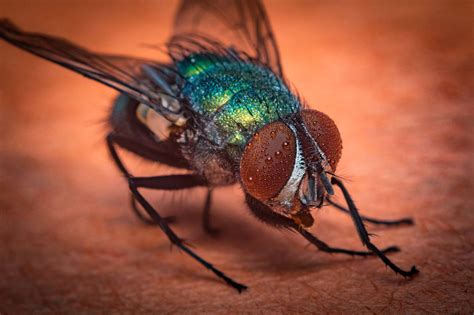Green Bottle Fly Control: A Proactive Approach
Green bottle flies, those metallic-green buzzing pests, are more than just a nuisance. They can contaminate food, spread diseases, and cause significant economic losses in agricultural settings. Effective green bottle fly control requires a proactive, multi-pronged approach that targets both adult flies and their breeding grounds. This article will explore effective strategies to keep these pests at bay.
What Attracts Green Bottle Flies?
Understanding what attracts green bottle flies is the first step to effective control. These flies are attracted to decaying organic matter, which serves as a breeding ground for their larvae (maggots). This includes:
- Dead animals: Carcasses, both large and small, are prime breeding sites.
- Pet waste: Untreated pet feces provide an ideal environment for maggot development.
- Spoiled food: Rotting fruits, vegetables, and meat are irresistible to adult flies seeking to lay eggs.
- Garbage and compost: Improperly managed waste attracts flies and provides ample breeding opportunities.
- Sewage: Leaking sewage systems can create large breeding areas.
How to Identify a Green Bottle Fly Infestation?
Identifying an infestation early is crucial for effective control. Look for:
- Adult flies: Observe the characteristic metallic green sheen of adult green bottle flies buzzing around garbage bins, compost heaps, or areas with decaying matter.
- Maggots: Inspect areas suspected of harboring breeding sites for the presence of white or cream-colored maggots.
- Pupal cases: These dark brown, barrel-shaped cases are the remains of the pupal stage of the fly's life cycle. Their presence indicates a recent or ongoing infestation.
- Foul odors: A strong, unpleasant smell often accompanies a large fly infestation, indicating decaying organic matter.
What are the Best Methods for Green Bottle Fly Control?
Controlling green bottle flies requires a combination of preventative measures and active control strategies.
1. Sanitation and Hygiene: The Cornerstone of Prevention
- Regular garbage disposal: Dispose of garbage frequently, using tightly sealed bins.
- Proper pet waste management: Clean up pet waste daily and dispose of it properly.
- Compost management: Turn compost regularly to aerate it and speed decomposition, reducing the attractiveness to flies.
- Cleanliness: Maintain a clean environment, both indoors and outdoors. Regular cleaning reduces food sources for flies.
- Seal food properly: Store food in airtight containers to prevent access to flies.
2. Physical Control Methods
- Fly traps: Various types of fly traps, including sticky traps and bait traps, can effectively capture adult flies.
- Fly swatters: While not a long-term solution, swatting flies can reduce their numbers temporarily.
- Screens and netting: Use window screens and netting to prevent flies from entering your home or business.
3. Chemical Control Methods
Chemical control should be used as a last resort and only after implementing preventative measures. Always follow the instructions carefully and choose products appropriate for the environment. Consult with a pest control professional for advice on selecting and using insecticides.
4. Biological Control Methods
- Natural predators: Encourage natural predators of flies, such as birds, spiders, and beneficial insects, by providing suitable habitats.
How Long Does It Take to Get Rid of Green Bottle Flies?
The time it takes to eliminate a green bottle fly infestation varies depending on the severity of the infestation and the control methods employed. A combination of sanitation, physical, and possibly chemical controls, applied consistently, will typically yield results within a few days to several weeks.
What Diseases Do Green Bottle Flies Carry?
Green bottle flies, like other flies, can transmit diseases. They can carry pathogens on their bodies and legs, transferring them to food and surfaces. Some diseases associated with flies include food poisoning, typhoid, cholera, and dysentery.
How to Prevent Green Bottle Flies From Breeding?
Preventing breeding is key to long-term control. This involves consistent sanitation practices, eliminating potential breeding grounds, and promptly addressing any signs of decaying matter.
Are Green Bottle Flies Harmful to Humans?
While not directly harmful in the same way as biting insects, green bottle flies can cause indirect harm through the transmission of diseases. Their presence can also be a significant nuisance.
By implementing a proactive and comprehensive approach to green bottle fly control, you can significantly reduce their numbers, protect your health, and maintain a clean and pest-free environment. Remember, prevention is always the best approach, but knowing how to actively control an infestation is crucial for maintaining a fly-free home or business.

